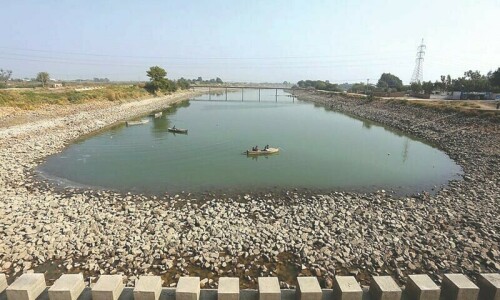PESHAWAR: The Khyber Pakhtunkhwa province has child population of approximately 8.28 million aged 5-17 years, of whom 11.1 per cent are working children, according to the first-ever Child Labour Survey 2022-23 launched by the provincial labour department on Wednesday.
As per the survey, of the total number of working children, 80pc were in child labour and 73.8pc were working in hazardous conditions.
The survey, which also covered the merged districts, was launched on the occasion of World Day against Child Labour during a ceremony held here.
Officials of various government departments, representatives of UN agencies, donors, academia, and civil society activists were present.
The survey collected data from 49,734 households, including 5,976 urban and 43,758 rural, achieving a response rate of 92.5pc despite harsh weather and security challenges, especially in the merged districts.
Referring to child population from 14-17 years, the survey said 21.6pc were working children and 15.5pc were in child labour or hazardous working conditions.
The report revealed that the four major industries for child labour included agriculture, forestry and fishing at 51.6pc; water collection at 19.1pc; wholesale and retail trade at 9.7pc and manufacturing at 7.7pc.
The causes of children being in labour were multi-dimensional, including head of household having no or primary education only 44.7pc, household being in the poorest wealth condition 31.8pc, household being the beneficiary of BISP’s assistance 26.3pc, migration of the head of household 14.6pc, and household losing at least one parent 6.6pc.
The survey report also provided a detailed analysis of the effects of child labour on children, which included physical and psychological effects, limiting their equitable opportunities to be fully educated, abuse at workplaces, economic exploitation and health consequences, etc.
It added child labour had been historically a huge issue with harmful consequences on the development and wellbeing of children and a challenge for government and other stakeholders to address.
The labour department conducted the survey with the support from Unicef and Foreign, Commonwealth and Development Office.
When contacted, Imran Takkar, provincial coordinator of Group Development Pakistan and founding member of Child Rights Movement, told Dawn that addressing economic vulnerabilities, improving access to education, enforcement of laws, and raising awareness were a few crucial steps that government had to take to eradicate child labour in Khyber Pakhtunkhwa.
Published in Dawn, June 13th, 2024












































